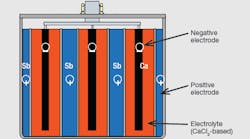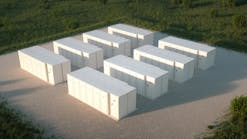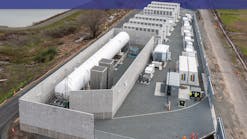The Latest on Battery Technologies for Energy Storage
Is it me or have you noticed the growing interest in technological applications associated with combating climate change lately? My inbox has been full of announcements, reports, and press releases on a plethora of eye catching subjects like reaching zero-carbon, renewable energy, energy storage systems, etc. One thing all these emails have in common is a focus on making the power grid more resilient throughout extreme weather events fueled by global warming.
On that theme, renewable energy is seen as being a major element of this effort, with energy storage systems making it possible. Several experts went so far as to say energy storage is essential for transitioning the power grid away from fossil-fuel based generation. It’s a critical link if you will. At that point, I shifted my reading to the issue of utility-scale energy storage research and development (R&D).
One email getting my attention was focused on the latest R&D in solid-state lithium batteries. They are said to have twice the capacity of today’s lithium-ion (Li-ion) batteries. Other emails shifted to alternative technologies designed to replace Li-ion batteries especially for utility-scale battery systems. Let’s look at other write-ups.
Maturing Technologies
Another centered on redox flow-battery advancements in the marketplace. They are composed of two liquid electrolytes separated by a membrane. Their capacity is limited only by the size of the electrolyte tanks. Recently, DOE (Department of Energy) announced they were funding R&D along with demonstration projects centered on grid-scale redox-flow batteries. Several marketing research groups are saying the redox-flow battery market is growing. Value-wise their estimates were all over the place, but the figures were impressive. I’ll move redox-flow batteries into my trending category and watch it.
Sodium-ion (Na-ion) batteries is one more application drawing interest lately. The reports point out that sodium is much cheaper than lithium. Lithium carbonate cost roughly US$80,000/ton compared to sodium carbonate running about US$300/ton. On the technical side, Na-ion batteries tend to be larger in size than Li-ion batteries, which is an issue for consumer electronics and electric vehicles. It’s not a problem for utility-scale storage applications. Globally there are about 20 Na-ion battery factories being planned or under construction. It appears that Na-ion batteries are another technology I’m going to watch.
There’s another well-known battery technology that has been advancing; it’s the liquid metal battery. Probably the first liquid metal battery technology that comes to mind is the sodium-sulfur battery that was popular many years ago, but there’s a new approach that’s intriguing. Xcel Energy announced that they were installing a single unit of Ambri’s liquid metal battery as part of a demonstration project at the Solar Technology Acceleration Center in Aurora, Colorado. It’s expected to be online in early 2024.
Designed for Hard Work
The Xcel Energy project utilizes Ambri’s second generation distinctive liquid metal battery system. So, I contacted Adam Briggs, Ambri’s Chief Commercial Officer to get a better understanding of the battery’s abilities. Adam explained that Ambri’s liquid metal battery is designed to be fully charged and discharged twice a day, every day for its 20-year lifetime. It’s a hardworking battery that’s designed to be worked hard with negligible capacity degradation!
Ambri’s cells employ the commonly available electrode materials, antimony and a calcium alloy, which are significantly less costly and more abundant than those used in Li-ion cells. These elements are placed in a sealed insulated container with a salt electrolyte that are heated to 500º Celsius (932º Fahrenheit). Once the system is operating, the charge/discharge cycles generates all the heat that is needed by the system.
The container’s insulation keeps that heat inside, which eliminates the need for an external heat source. Also, it doesn’t generate gas, which means Ambri’s system doesn’t need the cooling, fire suppression, or explosion prevention equipment required by Li-ion systems. Ambri is currently working on their third generation battery to increase the capacity of their battery system to the grid-scale megawatt level.
Other emails pushed more breakthrough technologies finding their way to the power grid. These included reports about gravity batteries, oxygen-ion batteries, zinc-air batteries, and iron-air batteries. The R&D is fascinating and challenging to understand, but we have too. Many years ago a friend told me, “storage systems are more relevant to today’s utilities than ever before.” That’s just as true today as it was then. We have to keep up with the developments in technologies if we are going to have any chance combating climate change, but what a rewarding challenge!


